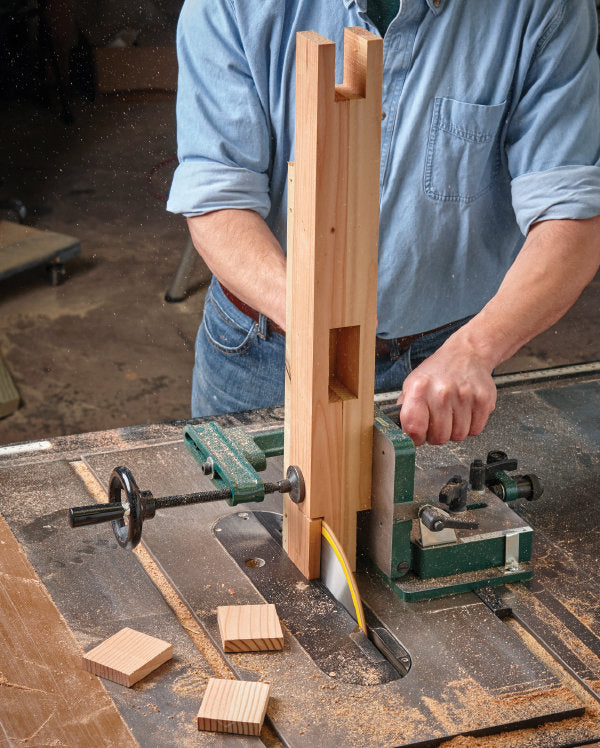
WoodRiver Deluxe Tenoning Jig
A strong mortise-and-tenon joint requires cheeks that are flat, smooth, and parallel. Good tenons can be cut in many different ways, but it’s hard to beat the results you get with a well-made table saw tenoning jig. With its sliding base and micro-adjustable stop, cutting perfect cheeks with the WoodRiver jig is smooth and simple. After cutting the shoulders, clamp the workpiece against the main fence, set the stop, and make your first cut. Repeat the process with the second cheek, and you’re done.
Shop-made jigs abound, but I can’t think of any that offer the features found in this sturdy cast-iron commercial version. The crank-handled clamping arm and the sliding base enable users to make cuts on both sides of a workpiece. (Cutting tenons this way eliminates fit issues that can sneak in when flipping the workpiece to cut the opposite cheek.) If you’re tackling a project that requires angled tenons, like a chair, this jig has you covered. The face of the jig tilts away from the blade up to 22°, and the secondary fence tilts back up to 49°.
This jig offers a solid starting point, but I discovered that a few simple upgrades (not mentioned in the instructions) can make it even better. Drill a few holes through the secondary fence and attach a backer board to minimize tearout. Depending on your saw’s miter slot-to-blade distance, the jig’s main face may not completely reach the saw blade. Fortunately, the main face has four holes that make it easy to add a spacer and zero it in. After attaching the spacer later in the test, I kept it in place and adjusted the scale when switching saws.
—Tester, Joe Hurst-Wajszczuk

Overview
- Cast-iron tenoning jig, $129.99.
- Adjustable fences for compound angles.
- Micro-adjustable stop to fine-tune the cut.
- May require minor modifications to suit your saw.



